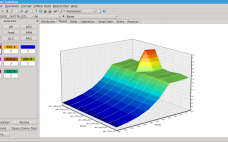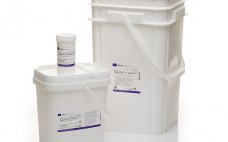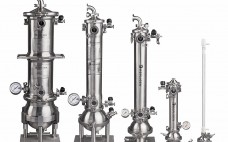This webcast features: Professor Christoph Herwig, Department of Biochemical Engineering, Vienna University of Technology Bioprocess Development for biotechnological high value added products is still a time consuming task. The reason for this is the high complexity of interdependence between process variables, product quality attributes and process parameters. The demonstration of understanding these interdependencies is however key to achieve regulatory acceptance according to Quality by Design (QbD) principles. Hence, it is important to set up senseful experiments and to gather as…
Ask the Experts
How to Boost Profits with Single-Use Powder Transfer
This webcast features: Chris Rombach, Director of Global Strategic Accounts, ILC Dover Biopharmaceutical manufacturers face a number of challenges. Open-suite biopharma manufacturing is gaining popularity. But it also leaves surfaces open to contamination, workers at risk for exposure to airborne particulates, and processes more exposed to product loss due to waste or spillage. Liquid handling systems adapted for dry powder applications are often a compromise, because liquid and powder flow rates, handling characteristics and dispensing volumes differ dramatically. A purpose-built,…
Principles and Troubleshooting of Large Scale Column Packing
This webcast features: J. Kevin O’Donnell, PhD, Process Chromatography Support Manager, Tosoh Bioscience This presentation focuses on the packing of process scale chromatography columns. Including general principles of column packing, common packing techniques used in packing process scale columns, qualification and evaluation of the packed column, and the troubleshooting of issues common to large scale column packing.
Modification of Glycans in Bioprocessing
This webcast features: Ryan Boniface, R&D Scientist, Thermo Fisher Scientific Protein quality is a topic of increasing importance as quality elements can have a significant impact on clinical behavior of a molecule. This talk will explore approaches to modify glycan patterns contribute to predicting, achieving and maintaining preferred glycosylation profiles. Glycosylation is a key product quality attribute for many biotherapeutic proteins expressed in CHO cells. N-linked glycans may display macro- and micro-heterogeneity; the degree of this variation can depend on…
Ask the Expert Liposome and Viral Vector Characterization: Use of Electron Microscopy and Image Analysis
with Dr. Josefina Nilsson For this webcast, Josefina Nilsson (EM Services business unit head) discussed Vironova’s work, including case studies. She focused on characterization of drug and gene delivery platforms with electron microscopy and image analysis, specifically for systems that use viral vectors or liposomes. Along with two colleagues — Gustaf Kylberg (image analysis expert) and Mathieu Colomb-Delsuc (electron microscopist) — she then answered questions from the audience. Nilsson’s Presentation Structural characterization provides important insights into the quality of development and…
Bioprocess Insights Webinars
The biopharmaceutical industry has developed into a multi-billion dollar market in just 30 years. Making decisions and setting up strategies in a rapidly changing environment can be challenging. The difference between a good and a great decision can have extensive implications for the future of a company. In this environment, knowledge and experience are what make the difference. Good insights about, for example, technical advancements, process economy implications, and sustainability aspects can help improve the individual decisions and strengthen the…
Objective Characterization Data on Drug and Gene Delivery Platforms
This webcast features: Dr. Josefina Nilsson, Head of Vironova Services, as well as her colleagues, Gustaf Kylberg and Mathieu Colomb-Delsuc. Advanced analytics that provide objective and reliable data can help to improve processes and shorten development time of drug and gene delivery platforms. The use of electron microscopy (EM) imaging combined with analysis using the proprietary Vironova Analyzing Software (VAS) enables semi-automated particle detection and classification. Statistically significant results are obtained in a time and cost effective manner. Typical data…
Eliminating the Ups and Downs of Staffing Challenges
This webcast features: Beth DiPaolo, M.A., SPHR, President, Eurofins Lancaster Laboratories Professional Scientific ServicesSM Many pharmaceutical and biopharmaceutical companies are currently experiencing strong development pipelines, but they face challenges associated with balancing the expanded workloads with restrictions on employee headcounts. To combat this, companies often turn to temporary staffing; however, due to the challenges in finding, training, and retaining motivated talent, the temporary staffing model does not meet current demands in these areas. As an expert with 14 years of…
Single-Use Biopharma Product Recycling: An Alternative Process to Unlock the Challenges
This webcast features: Jacqueline Hollands Ignacio, Corporate Responsibility Programs Manager – Customer Initiatives, MilliporeSigma, and Michael Farrell is Corporate Disposal Coordinator, Triumvirate Environmental. As the biopharmaceutical industry increases the adoption of single-use manufacturing products, the issue of recycling becomes a challenge. Disposal and recycling the plastics from these products is a challenging task due to many factors such as limitations within the recycling infrastructure, products containing a mix of materials and plastics, and biopharmaceutical products can contain biologically hazardous materials…
High Performance Cell Retention Technology for Cell Culture Process Intensification
This webcast features: Millie Ullah, PhD, Associate Director of Upstream Product Management and Marketing, Repligen The move toward continuous processing and intensified processes is a paradigm shift in bioproduction. In upstream cell culture, the challenge is to simplify and minimize process steps (N-1 perfusion) while intensifying cell retention and viability (high density cell expansion). This webcast will present a case study where use of the ATF cell retention system in process intensification of a fed-batch culture resulted in successful N-1…









